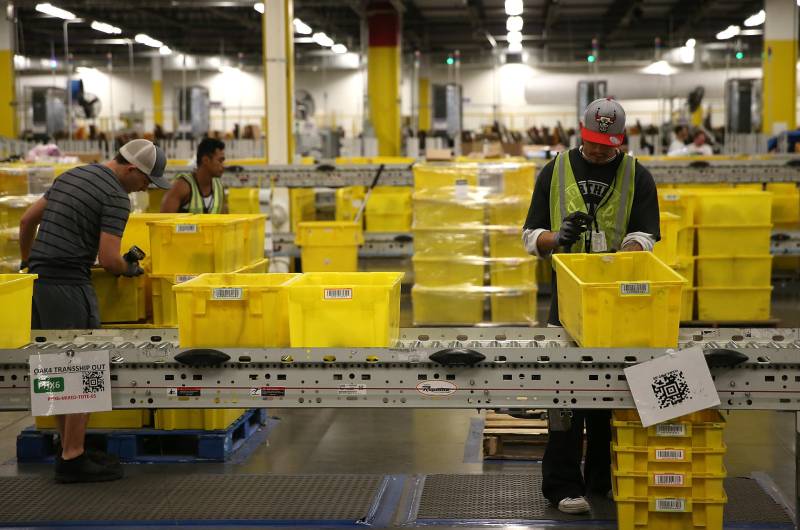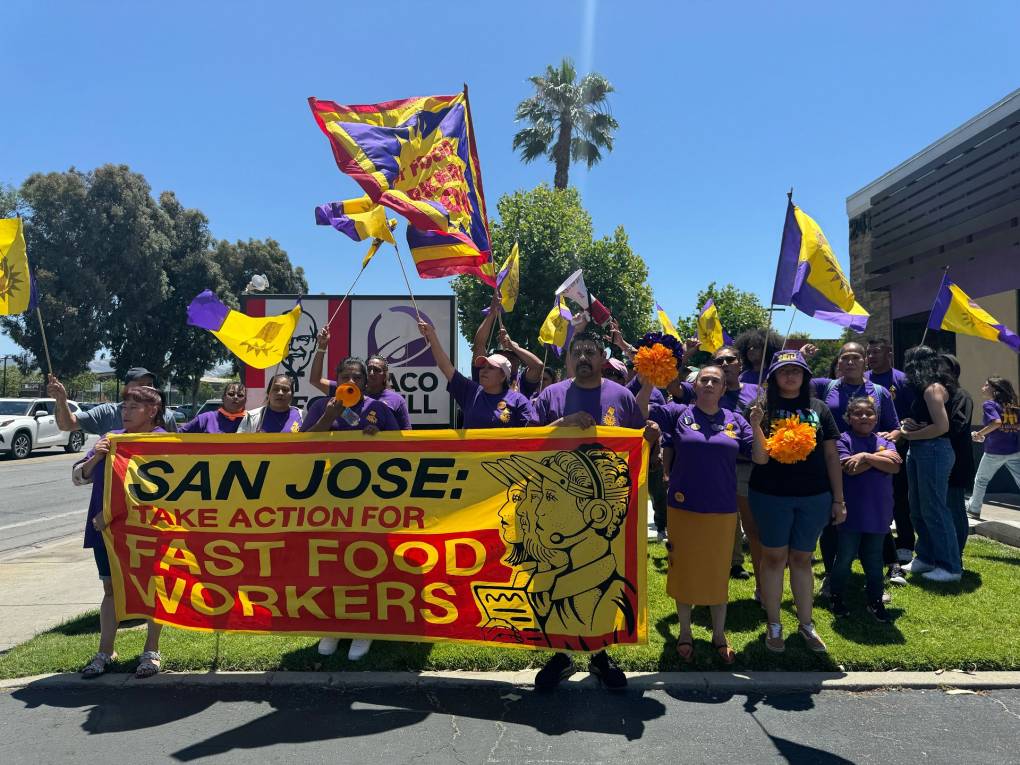New York, Oregon and Washington are among the states that have since adopted similar regulations. A federal bill introduced in Congress last month would extend the protections to warehouse workers nationwide.
Investigators with the California Labor Commissioner found violations at the Amazon.com Services LLC facilities in Moreno Valley and Redlands, impacting nearly 3,000 workers between October 2023 and March 2024. The agency assessed penalties against the company in May for $4.7 million and $1.2 million for the two warehouses.
Amazon has appealed the proposed penalties and is awaiting a hearing.
“The truth is, we don’t have fixed quotas. At Amazon, individual performance is evaluated over a long period of time in relation to how the entire site’s team is performing,” Amazon spokesperson Maureen Lynch Vogel said in a statement. “Employees can — and are encouraged to — review their performance whenever they wish. They can always talk to a manager if they’re having trouble finding the information.”
García-Brower countered that Amazon’s peer-to-peer evaluation system is “exactly the kind of system that the warehouse quotas law was put in place to prevent.”
In 2021, then-CEO Jeff Bezos announced Amazon would try to become the “Earth’s Safest Place to Work.” The latest California citations, however, signal the company is falling short of its goal, Mindy Acevedo, an attorney with the Warehouse Worker Resource Center, told KQED.
“They keep pushing for faster and faster delivery windows, and they have not actually addressed what’s causing such high injury rates,” said Acevedo, who helped workers alert state authorities about quota concerns. “If they’re not complying with just the notices, then what does that say about their compliance with the rest of the law? Like, can we really trust that their quotas are safe enough?”
Studies have shown that workers at Amazon, the largest warehouse employer nationwide, face more dangerous conditions than other companies.
In 2023, Amazon employed 35% of all U.S. warehouse workers but was responsible for 53% of all serious injuries in the industry, according to an analysis by the Strategic Organizing Center. The union-backed center found that injury levels spiked during the company’s busiest periods, such as Prime Day and the holiday shopping season.
During the press conference on Tuesday, Amazon employees said they worked in fear of losing their jobs if they didn’t move fast enough but were often unaware of what production targets they were expected to meet.
“We are humans. Our safety is important to us. But they treat us like one of their robots,” said Nannette Plascencia, 46, who works at the Moreno Valley facility moving large amounts of freight. “These citations give me hope that it is possible to hold Amazon accountable to the people who make their corporation so successful.”


